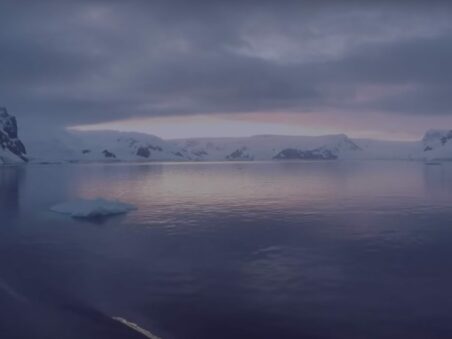PLACES OF ABANDONMENT
Speculative re-use designs for a decommissioned oil platform and a nuclear power plant
Inspired by Islands of Abandonment: Life in the Post-Human Landscape by Cal Flynn, this design studio takes two distinct sites as starting points: a decommissioned oil platform in the North Sea and the similarly decommissioned nuclear power plant Isar 2 near Munich.
These sites serve as symbolic remnants of the industrial age and its ecological and societal contradictions. Both stand as monumental, almost archaic relics of a time marked by technological expansion and energy-intensive infrastructures, now demanding critical re-engagement with the built environment of the past.
The studio’s goal is to develop speculative future scenarios based on these extreme, human-made infrastructures. Rather than pragmatic reuse, the focus lies on narrative, spatial, and atmospheric transformations. How might an offshore oil platform become a site for cultural practices, ecological experiments, or utopian ways of living? In what form could the architecture of a nuclear power plant be reimagined as a repository of collective memory, a landscape catalyst, or a stage for futures beyond energy production?
These design proposals operate in the tension between fiction and feasibility, poetic imagination and critical reflection. “Abandoned places” are not viewed as obsolete or disposable, but rather as resources for visionary thinking. The development of individual research questions, narrative scenarios, and spatial atmospheres forms the core of this studio – navigating between context and speculation, past and possibility.
Design Task / Learning Outcomes
Students are expected to explore various forms of feedback and self-organization in order to translate research findings into a coherent architectural concept, and to implement this as a spatial intervention or building. The aim is to develop an independent project that transforms an abstract narrative into a tangible architectural proposal, addressing urgent environmental and societal issues of our time.
This is a demanding program that invites students to thoroughly investigate a previously unfamiliar context, study its technical constraints, formulate a vision for new modes of inhabitation, build a personal narrative, and design a future scenario.
They will also develop circular systems for energy, food, and water, and communicate their ideas through analytical and design-based media.
Aspects such as comfort, function, design, and aesthetics should be considered just as essential as an energy strategy suited to extreme, infrastructure-free environments.
While the oil platform in the North Sea offers an isolated, remote setting, the nuclear power plant sits within a cultivated and urbanized landscape along the Isar River. These fundamental differences will shape both the narrative and the technical implementation of the proposals.
featured image: ©Midjourney



